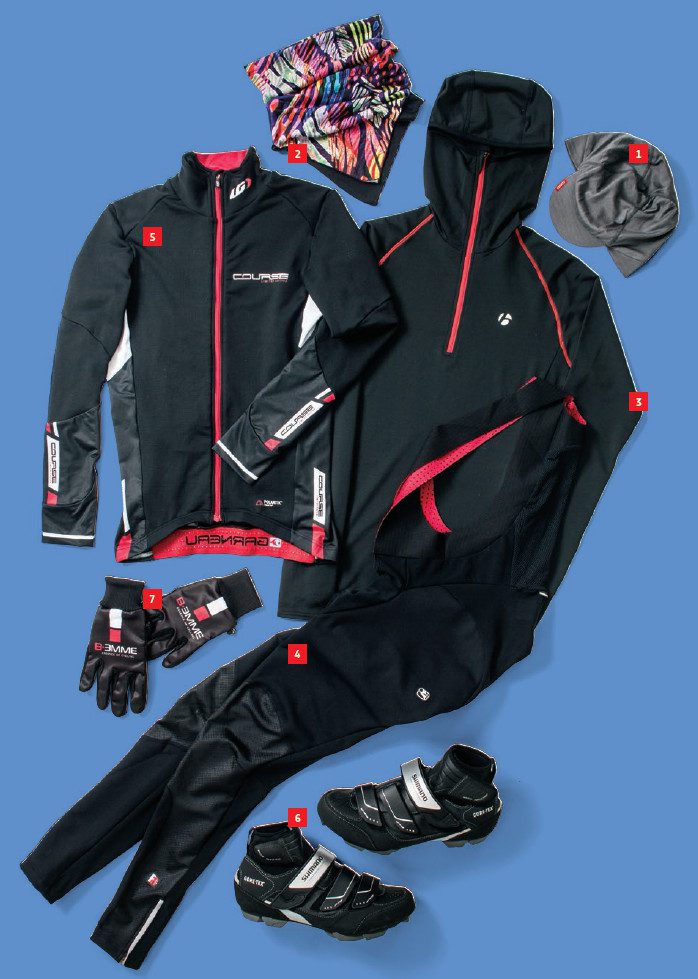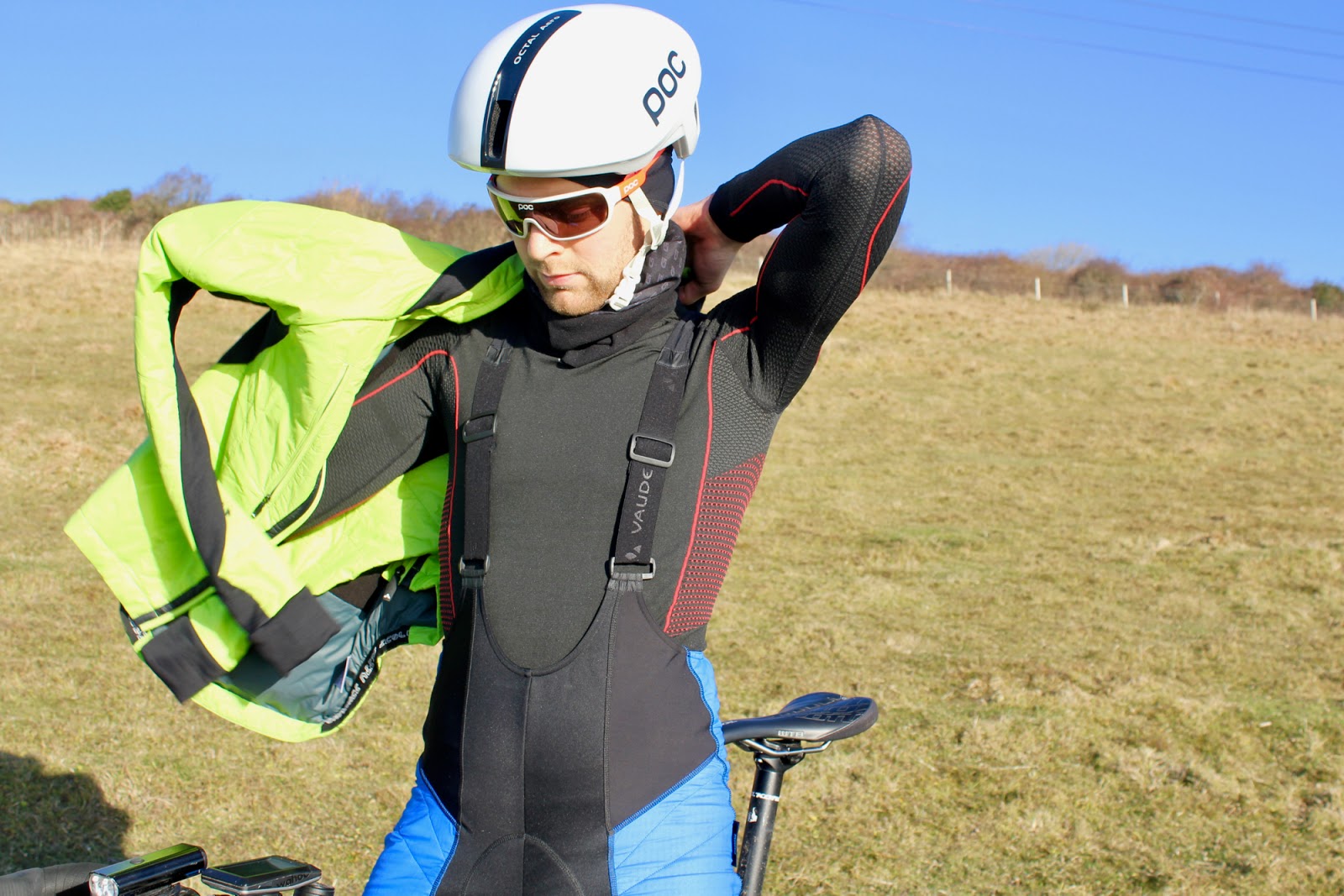The Joy of Cycling in Chilly Conditions: Embracing the Outdoors During Winter Months
Cold weather bicycle riding offers a unique and exhilarating experience for cycling enthusiasts. By embracing the winter months, you can maintain your fitness levels, enjoy stunning snow-covered landscapes, and combat seasonal affective disorder (SAD) through outdoor activities. The crisp air and quiet roads provide a refreshing change of pace from summer cycling, allowing you to rediscover your surroundings and rejuvenate your passion for the sport.
Selecting the Right Gear: Essential Clothing and Accessories for Cold Weather Cycling
Proper attire and accessories are crucial for maintaining comfort and safety during cold weather bicycle riding. Investing in high-quality gear ensures that you stay warm, dry, and visible while enjoying your winter cycling adventures. Key items to consider include:
- Base layers: Moisture-wicking base layers are essential for keeping your skin dry and regulating body temperature. Choose long-sleeved tops and leggings made from materials like merino wool or synthetic fabrics designed for cold weather activities.
- Insulated jackets: A warm, breathable, and water-resistant jacket is vital for protecting against cold winds and precipitation. Look for jackets with adjustable cuffs, hem, and collar to seal in warmth and prevent heat loss.
- Gloves: Cold hands can quickly ruin a ride. Choose insulated, windproof gloves with a waterproof membrane to keep your hands dry and warm. Consider using lobster-claw or three-finger gloves, which provide better warmth and dexterity than traditional gloves.
- Hats: A significant amount of body heat can be lost through the head. Wear a thin, insulating hat or headband under your helmet to retain warmth without adding bulk.
- Shoe covers: Protect your feet from cold winds, rain, and snow with waterproof shoe covers. Look for models with adjustable openings and secure closures to prevent drafts and keep your feet dry.
How to Layer Up for Cold Weather Bicycle Riding
Layering is a crucial aspect of cold weather bicycle riding, allowing you to maintain a comfortable body temperature and wick moisture away from your skin. Aim for a 3-layer system that includes a base layer, mid layer, and outer layer. Each layer plays a specific role in keeping you warm and dry:
- Base layer: The base layer, typically made from moisture-wicking materials like merino wool or synthetic fabrics, sits directly against your skin. Its primary function is to draw sweat away from your body, keeping you dry and warm. Choose long-sleeved tops and leggings for full-body coverage.
- Mid layer: The mid layer, often made from fleece or lightweight down, provides insulation and retains body heat. This layer should be breathable and able to wick moisture away from the base layer. Look for vests or jackets with adjustable cuffs, hems, and collars to seal in warmth and prevent heat loss.
- Outer layer: The outer layer, or shell, is designed to protect you from wind, rain, and snow. Choose a waterproof and breathable jacket with adjustable openings and secure closures to prevent drafts and keep your layers dry. Pair it with waterproof pants or tights for full-body protection.
Remember to adjust your layers based on the weather conditions and your personal comfort level. It’s better to start a ride feeling slightly chilly, as your body will warm up once you start pedaling. Additionally, avoid wearing cotton, as it retains moisture and can leave you feeling cold and clammy.
Bicycle Maintenance for Cold Weather: Ensuring a Smooth Ride in Winter Conditions
Preparing your bicycle for cold weather riding is essential to ensure a safe and enjoyable experience. By following these steps, you can maintain your bicycle’s performance and extend its lifespan:
- Check tire pressure: Cold weather can cause tire pressure to drop, leading to decreased performance and increased risk of punctures. Regularly check your tire pressure and inflate them to the recommended level for your bicycle and riding conditions.
- Inspect brakes: Ensure your brakes are functioning properly by checking the brake pads for wear and adjusting the tension if necessary. Properly aligned brakes will help you maintain control on slippery surfaces.
- Lubricate the chain: Cold temperatures can cause metal components to contract, increasing friction and accelerating wear. Regularly apply a high-quality bicycle lubricant to your chain to minimize wear and tear and maintain smooth shifting.
- Install fenders: Fenders protect your bicycle and clothing from mud and slush, keeping you clean and dry during wet rides. Choose fenders that fit your bicycle’s tire size and provide adequate coverage for your frame and wheels.
- Clean and maintain your bicycle: Regularly clean your bicycle to remove dirt, mud, and salt, which can cause corrosion and damage. After cleaning, apply a protective wax or lubricant to your bicycle’s frame and components to prevent rust and maintain its appearance.
By investing time in bicycle maintenance, you can enjoy cold weather bicycle riding with confidence and peace of mind.
Staying Safe on the Road: Visibility and Navigation Tips for Cold Weather Cycling
Cold weather bicycle riding presents unique safety challenges, such as reduced visibility and slippery road conditions. By following these tips, you can enhance your safety and navigate winter roads with confidence:
- Use lights: Equip your bicycle with front and rear lights to improve your visibility during dark winter days and nights. Choose lights with a high lumen output and a long runtime to ensure you’re seen by motorists and pedestrians.
- Wear reflective gear: Incorporate reflective elements into your clothing and accessories to increase your visibility. Reflective vests, arm bands, and ankle straps can significantly improve your visibility in low-light conditions.
- Choose winter-specific cycling routes: Opt for cycling routes with well-maintained roads, wide lanes, and minimal traffic. Avoid icy or snow-covered paths, as they can be slippery and increase the risk of accidents.
- Adjust your riding style: Slow down and increase your following distance when riding in wet or icy conditions. Use wider turns and avoid sudden braking or swerving to maintain control and stability.
- Stay alert: Remain vigilant and avoid distractions, such as listening to music or using your phone, while cycling in cold weather. Be aware of your surroundings and anticipate potential hazards, such as black ice or hidden potholes.
By following these safety tips, you can enjoy cold weather bicycle riding while minimizing the risks associated with winter conditions.
Winter Cycling Nutrition: Fueling Your Ride for Optimal Performance
Proper nutrition plays a crucial role in maintaining energy levels, hydration, and warmth during cold weather bicycle riding. By incorporating these foods and beverages into your diet, you can fuel your rides for optimal performance:
- Complex carbohydrates: Consuming complex carbohydrates, such as whole grains, sweet potatoes, and legumes, provides a sustained energy source for your rides. These slow-release carbohydrates help maintain stable blood sugar levels and prevent energy crashes.
- Healthy fats: Incorporating healthy fats, like avocados, nuts, and seeds, into your meals can help insulate your body and provide additional energy. These fats also support cell function and aid in nutrient absorption.
- Protein: Protein-rich foods, such as lean meats, fish, tofu, and tempeh, contribute to muscle repair and recovery. Consuming protein before or after your rides can help rebuild muscle tissue and support overall performance.
- Hydration: Staying hydrated is essential during cold weather rides, as dehydration can impair performance and increase the risk of hypothermia. Opt for warm or room-temperature beverages, like herbal tea or sports drinks, to help maintain body temperature and replace lost electrolytes.
- Pre-ride snacks: Eating a small, easily digestible snack before your rides can help maintain energy levels and prevent hunger. Consider options like bananas, energy bars, or yogurt with granola.
By focusing on these nutrition principles, you can optimize your performance and enjoyment during cold weather bicycle riding.
Building a Cold Weather Cycling Community: Finding Fellow Riders and Group Rides
Cold weather bicycle riding can be a more enjoyable and motivating experience when shared with others. By connecting with fellow cyclists and participating in group rides, you can build a supportive community and enhance your winter cycling adventures. Here’s how to get started:
- Join local cycling clubs: Many cities and towns have cycling clubs that organize group rides and events throughout the year. Research local clubs and consider joining one that aligns with your interests and skill level.
- Utilize social media: Social media platforms, such as Facebook, Strava, and Meetup, often have groups dedicated to cold weather cycling. Join these groups to connect with other cyclists, share tips and experiences, and discover group rides in your area.
- Attend winter cycling events: Participating in winter cycling events, like fat bike races or snowy century rides, can help you meet like-minded cyclists and build lasting connections. Check local event listings and consider registering for an upcoming event.
- Create your own group rides: If you can’t find a group that suits your needs, consider starting your own. Invite friends, colleagues, or fellow cyclists to join you on winter rides, and use social media to promote your group and attract new members.
- Participate in virtual group rides: With the rise of virtual cycling platforms, you can now join group rides from the comfort of your own home. These platforms allow you to connect with cyclists from around the world, compete in virtual races, and enjoy the social aspects of cold weather bicycle riding without leaving your living room.
By building a cold weather cycling community, you can enjoy the benefits of shared experiences, motivation, and safety in numbers during the winter months.
Expanding Your Cycling Horizons: Exploring New Terrains and Disciplines in Cold Weather
Winter is the perfect time to try new cycling activities and disciplines, keeping your riding fresh and engaging. By exploring new terrains and pushing your boundaries, you can enhance your skills, meet new people, and make the most of the winter months. Here are some ideas to consider:
- Fat biking: Fat bikes, with their oversized tires, offer exceptional traction and stability on snowy and icy surfaces. Riding a fat bike can be a fun and challenging way to enjoy the winter landscape while getting a great workout. Look for local fat bike trails, group rides, or races in your area.
- Cyclocross: Cyclocross is a muddy, high-intensity discipline that combines road cycling, mountain biking, and obstacle courses. Races typically take place in the fall and winter, making it an excellent option for cold weather bicycle riding. Join a local cyclocross series or practice group to hone your skills and meet fellow cyclists.
- Indoor training: When outdoor riding isn’t possible, consider investing in an indoor trainer or attending a spin class. Indoor training allows you to maintain your fitness levels and cycling skills during the winter months, all from the comfort of your own home or gym. Many virtual cycling platforms also offer group rides and races, enabling you to connect with other cyclists and stay motivated.
- Winter tours and adventures: Many cycling tour companies offer winter trips and adventures, such as ski resort shuttles, winter camping excursions, or guided fat bike tours. Research local tour operators and consider joining a winter cycling adventure to explore new terrains and make lasting memories.
By embracing new cycling activities and disciplines, you can keep your cold weather bicycle riding fresh, exciting, and rewarding throughout the winter months.







